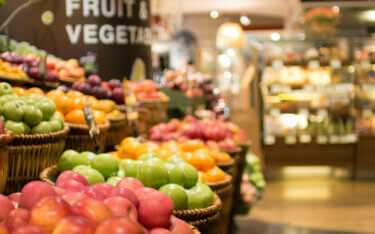“Food is not just the future of convenience stores, it’s the present,” said Jeff Lenard, a spokesperson for the National Association of Convenience Stores (NACS). “Convenience stores have evolved to become much more about on-the-go food,” he said, while dine-in is becoming a factor. C-stores that add dine-in seating are “telling people” that their food is “worthy of sitting down” and not just eating one-handed while on the road.
Consider the pitch of a store called Loop, founded in 2013 and now with more than 50 stores in California: “We’re serving up a menu of fresh ’n’ tasty food that you won’t find at any other convenience store,” says Loop’s website, including hot items such as build-your-own pizzas and fried chicken. “Need a car wash? We got that. Need a dog wash? We got that too. Need to gas up the grill for tomorrow’s bbq? We’ve got your propane.”
Loop also promises “blazing fast internet” for anyone who needs to get on an “emergency Zoom call.” Like other tech-savvy C-stores, Loop allows customers to use an app to order ahead.
Some C-stores offer delivery, so customers don’t have to leave home. Others seek to distinguish themselves with unique products. Circle K, a national chain with thousands of stores, has launched a network of high-speed EV charging stations and is the exclusive retailer for Mountain Dew’s Purple Thunder flavor, Lenard noted. C-stores can be a good way for companies to test a new product before a full-scale rollout.
Total C-store sales hit a record $859.8 billion in 2023, including fuel sales, according to NACS. Fuel sales accounted for 67.3% of revenues, but only 38.6% of profits for the convenience store industry in 2023. Lenard noted that 58% of people who buy gas at a station with a store go inside.
In 2024 there are slightly more than 152,000 C-stores in the United States, up 1.5% over 2023, Lenard said. “If you add up all the grocery stores in the country, plus all the dollar stores, plus all the drugstores, plus all the Starbucks, plus all the McDonald’s, you’re at about that figure. Convenience stores are ubiquitous.”
The goal is to get people into the store, an idea initiated by the renowned Wall Drug in South Dakota. That store, founded in 1931, could be considered one of the first convenience stores. It built its business, decades before cars had air conditioning, on the promise of free ice water.
Since being founded nearly a century ago, C-stores have satisfied customers’ immediate desires. About 66% of items purchased are consumed immediately, 80% within the hour, according to NACS data. While big-box stores in malls and traditional groceries have lost business to delivery services, C-stores remain resilient. “When somebody comes in, they want something now,” Lenard said. “That’s difficult to replace with delivery or online.”
Sometimes, even with C-stores, life imitates art. In Myrtle Beach, South Carolina, you can enter the world of The Simpsons in a real-life Kwik-E-Mart. The store sells Flaming Moe energy drinks, Lard Lad donuts, Buzz cola and Duff beer — not the healthier fare of many modern convenience stores, but certainly worth a trip down memory lane.


